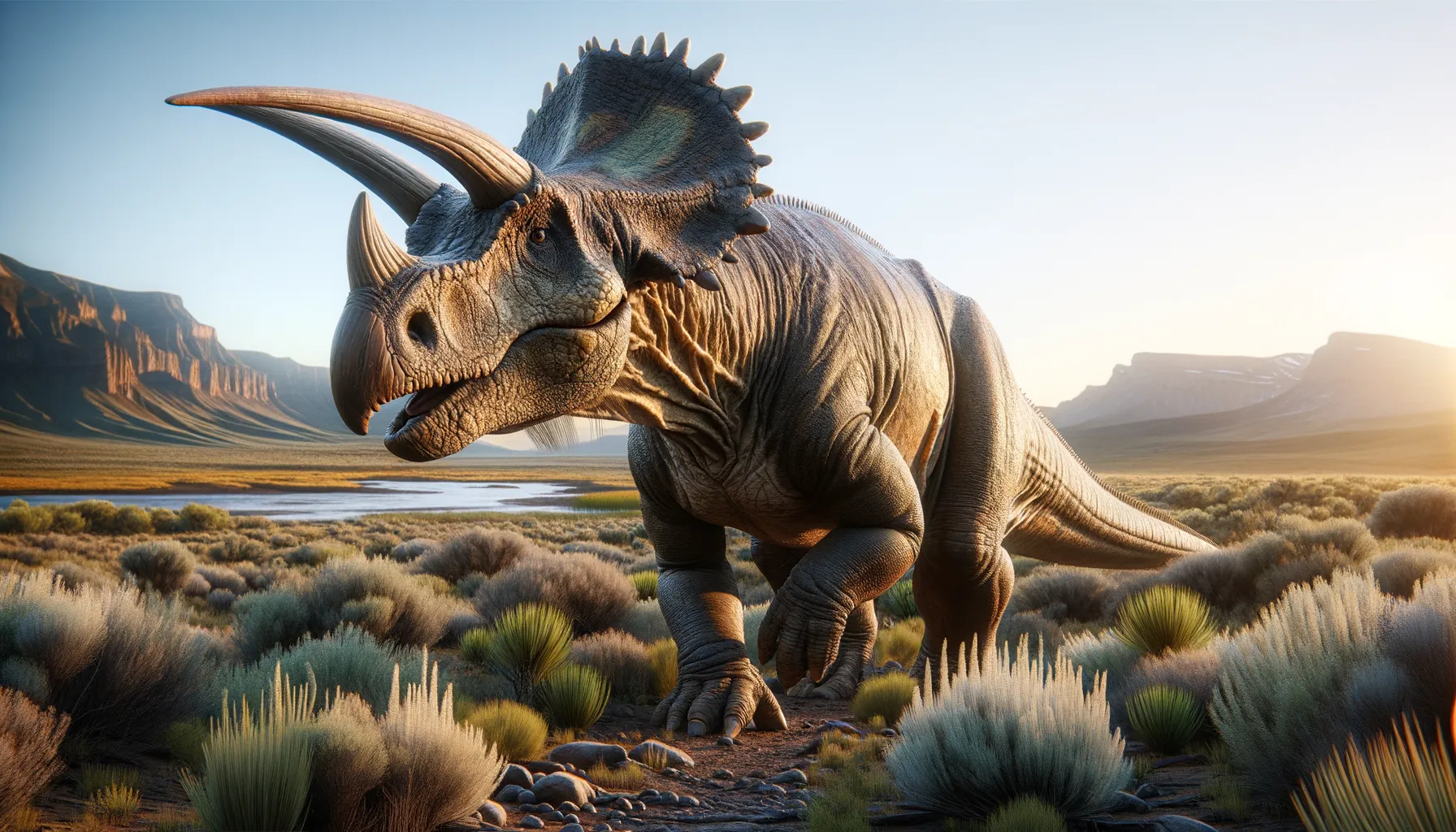
Pachyrhinosaurus
Nature's armored giant, thriving in herds.
Period
Cretaceous
Length
Ranged from 5 to 6 meters long.
Height
Stood about 3 meters tall at the shoulders.
Weight
Approximately 4,000 kilograms.
Pachyrhinosaurus was a stocky, horned dinosaur known for the large, bony mass on its nose. As a herbivore, it roamed what is now North America millions of years ago. Often it lived in herds, which helped with protection and sociability. Its unique cranial features have fascinated paleontologists, making it a subject of extensive research and debate. Fossils of this dinosaur are notably found in rich deposits, offering insights into its life and times.
Diet
Pachyrhinosaurus was herbivorous, feeding primarily on tough and fibrous plants. Its beak-like mouth allowed it to shear through vegetation effectively, making it well-suited for a varied diet.
Hunting
As a plant-eater, it did not hunt but foraged for food. Its likely feeding strategy involved social behaviors with its herd to monitor for predators while grazing.
Environmental challenges
Pachyrhinosaurus faced challenges from predators like tyrannosaurs, necessitating strong group behaviors for defense. It also contended with varying climates, adapting to cold and temperate environments. The changing landscapes due to tectonic forces provided both opportunities and threats for relocation and grazing fields.
Speed
Slow, lumbering movement.
Lifespan
Estimated at around 20 to 30 years.
First discovery
Discovered in Alberta, Canada, in the 1940s.
Fun Facts
- Pachyrhinosaurus is known for its thick, bony mass on its nose instead of the more typical horn found on other ceratopsians.
- The name Pachyrhinosaurus means 'thick-nosed lizard' due to its distinct facial feature.
- Pachyrhinosaurus lived around 70 million years ago during the late Cretaceous period, mainly in what is now North America.
- Unlike some dinosaurs that moved in solitary, Pachyrhinosaurus likely lived in herds, which provided protection against predators.
- Fossil evidence suggests that Pachyrhinosaurus was a herbivore, feeding on plants and low-lying vegetation.
- The first Pachyrhinosaurus fossils were discovered in Alberta, Canada, in the mid-20th century.
- Pachyrhinosaurus could grow up to 20 feet long, making it a sizable member of the dinosaur world.
Growth and Development
Young Pachyrhinosaurus likely grew quickly to reach sizes where they were less vulnerable to predators. This rapid growth required an abundant intake of plant matter. The development of their nasal boss, a key feature, was gradual and prominent in adults.
Habitat
Pachyrhinosaurus lived in diverse environments ranging from lush, fern-filled lowlands to cooler upland areas, indicating its adaptability. It preferred regions with abundant plant life to support its massive dietary needs. Water sources would have been crucial for its survival and the survival of the herd.
Interaction with other species
It shared its habitat with various species, including other herbivores which likely competed for resources. Pachyrhinosaurus would have been vigilant against apex predators. Its presence undoubtedly influenced the structure of the ecosystem, with its herds often on the move.
Natural lifespan
It lived up to 30 years if it evaded predators and disease.
Reproduction
Pachyrhinosaurus likely laid eggs like modern reptiles, with nests possibly built in communal areas for protection. After hatching, juveniles may have been cared for by adults in their herd. Egg-laying periods would have been crucial times, requiring extra vigilance.
Social behaviour
This dinosaur exhibited strong social behavior, often moving in herds for protection from predators. Communication among them could have been through visual displays aided by their colorful crests. Young ones likely learned survival skills through interaction within the group.
Fossil locations
Pachyrhinosaurus fossils have been prominently found in Alberta, Canada, within areas rich in Cretaceous deposits. The fossils were found in geologic formations preserving a wide range of dinosaur species. Additionally, some fossils emerged in Alaska, demonstrating its wide range during the Late Cretaceous period.
